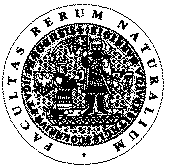Forum Digest
Faculty Forum
Boathouse Opened
The "start" of the Rector's Sports Day (17 May 1995) was combined with the ceremonial opening of the new boathouse of the Faculty of Physical Education and Sport, in the precincts of the slalom course in the Troja district of Prague 7. The boathouse was purchased by the Faculty of Physical Education and Sport both for its own students, and for the teaching activities of the physical education departments of other faculties. It is well situated both for water sports and for rambling (the exhibition halls of Vystaviste, the Stromovka park, and the Troja palace are all nearby). Inside the boathouse, a display of black and white photographs by Martin Hladik is currently on show.
(luc)
(vol. 1, no. 5, 1995)

The photograph by Stepan Smetacek shows the opening race on the Rector's Sports Day.

The Faculty of Natural Sciences of Charles University Celebrates
In June, the Faculty of Natural Sciences of Charles University celebrates the seventy-fifth anniversary of its foundation. Compared to the rapidly approaching 650th jubilee of the university as a whole this is a relatively short space of time, but the Faculty of Natural Sciences has nonetheless built up a rich and colourful tradition through the committed research and teaching efforts of several generations of natural scientists, often working under very unsettled historical conditions. Three-quarters of a century of dynamic advances, repression, stagnation and revival in the work of the Faculty are perhaps a suitable occasion on which to review the main events in the Faculty's development.
After the foundation of Charles University in 1348, the natural sciences were primarily taught, together with mathematics, at the Philosophical Faculty; only certain aspects of the biological sciences and chemistry were incorporated into studies at the Faculty of Medicine. The research, teaching, epistemological and sociological activities of the university were further divided between the Faculties of Theology and Law. The gradual development of the natural sciences climaxed with their conspicuous expansion at the turn of the 19th and 20th Centuries. As a result of this flowering of the natural sciences and the ever-increasing differentiation between separate disciplines, suggestions arose that, in order to reinforce the specificity of the exact sciences, the university should create a self-contained Faculty of Natural Sciences. This suggestion was first presented in 1908. However, developments in Europe at that time led eventually to the First World War, and so the first attempt to create a new faculty was dampened by political events. The end of the war, together with the creation of Czechoslovakia, brought with them unusually favourable conditions for realising the plan. The Faculty of Natural Sciences was finally brought into being in 1920, under the terms of law no. 392/120 Sb. (dated 24 June), which separated out mathematics, the natural sciences and pharmacy into a newly-created fifth faculty of Charles University. In the Winter Semester of school year 1920-21, when it began its activities, the Faculty had fifteen regular professors and nine special professors, 719 students of mathematics and the natural sciences, and 130 students of pharmacy. Its internal structure comprised of fourteen institutes specialising in anthropology, astronomy, biology, demography, chemistry, mathematics and physics; some of these subjects were further differentiated and developed into sub-disciplines. The enthusiasm of the founders of the young faculty, both for teaching and research, found a happy expression in the quality of their results and the high scientific standards of their new graduates. The promising development of these early years, however, was forcibly interrupted by the German occupation at the start of World War II, with the tragic result that the universities were closed on 17 November 1939.
Regrettably, the end of the war brought only a short three-year period, in which the democratic atmosphere supported a renewal of university activities on the basis of full academic freedom. After February 1948, the consolidation in power of the totalitarian regime immediately made itself felt in the limiting and tendentious ideologisation of university teaching and research, and the Faculty of Natural Sciences did not escape the consequences. In 1952, it was divided into three separate faculties - a Faculty of Biology; a Faculty of Geology and Geography; and a Faculty of Mathematics of Physics (incorporating chemistry). This arrangement, however, lasted only until 1959, when the Faculty of Natural Sciences was refounded, minus mathematics and physics, which remained at their own faculty. Chemistry was transferred back from the Faculty of Mathematics and Physics to the restored Faculty of Natural Sciences. In this form the Faculty of Natural Sciences survived until the return of academic freedoms in November 1989, which it has used to reinforced its own specific character, as well as to carry out urgent adjustments to its internal structure and organisation.
Prof. RNDr. Petr Cepek, CSc.
Dean, Faculty of Natural Sciences
(vol. 1, no. 2, 1995)
 Index
Index
Jump to Charles University home page


 Index
Index